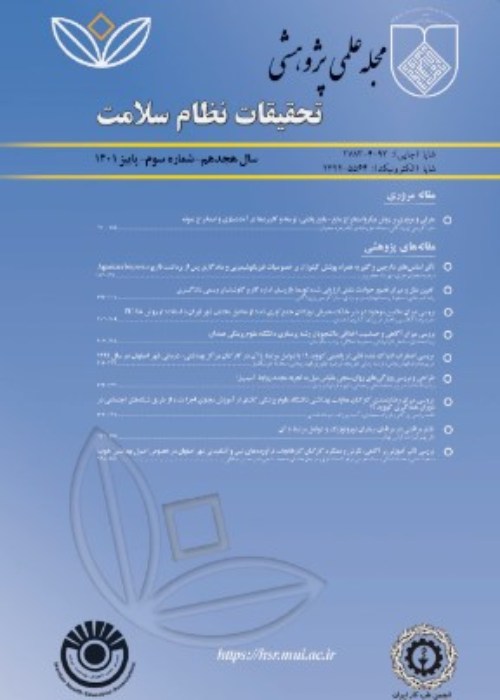Nitrate Changes Zoning in Groundwater Resources of West Isfahan Region during 2013-2016, Using Geographic Information System
Nitrate is one of the most important pollutants in groundwater resources, which is mainly caused by agricultural fertilizers and wastewater disposal and is very important for health hazards. The purpose of this study was to identify the sources of nitrate contamination and zoning in groundwater resources of Tiran and Karvan area in west of Isfahan, Iran, using Geographic Information System (GIS) and investigate the status of nitrate in the groundwater aquifer.
This cross-sectional descriptive study was conducted on 40 underground water sources of Tiran and Karvan in west of Isfahan during a four-year period. Nitrate test was performed by spectrophotometer. The results were analyzed by one-way analysis of variance (ANOVA) in GIS and SPSS software. One-sample t-test was used to compare the mean nitrate content of water sources with the corresponding standard.
The mean concentration of nitrate in 2013, 2014, 2015, and 2016 was 42.29 ± 17.27, 43.33 ± 16.65, 45.09 ± 16.95, 47.29 ± 18.10 mg/l, respectively. The highest amount of nitrate based on the interpolation map was related to the central parts of the city. The best method of interpolation for nitrate, considering the normal distribution of data, was ordinary kriging and Gaussian and exponential models. One-way ANOVA showed that there was no significant difference between the mean concentration in 2016 with the mean values measured in different years (P > 0.05). The one-sample t-test showed that the average nitrate in 2015 and 2016 was below the global standard of 50 mg/l (P > 0.05).
Nitrate concentration in the region's water resources is at the standard level, but considering its values and changes over the past three years, the probability of increasing and exceeding the standard limit is expected. Moreover, according to GIS maps, the average nitrate in the central part of the city is higher than the other parts. In order to prevent the incremental trend of nitrate, proper management in use of nitrogen fertilizers, land use change, construction of sewage treatment plant, and necessary training measures must be done.
- حق عضویت دریافتی صرف حمایت از نشریات عضو و نگهداری، تکمیل و توسعه مگیران میشود.
- پرداخت حق اشتراک و دانلود مقالات اجازه بازنشر آن در سایر رسانههای چاپی و دیجیتال را به کاربر نمیدهد.


